
Access to Care Starts Here
After obtaining an undergraduate degree in biological sciences from California State University, Chico in 2004, Dr. Stacy Kraus thought she wanted to pursue a job in the rapidly growing biotechnology field.
That career path changed a couple of years later when she encountered Dr. Kate Hurley while working as a technician at the California Animal Health and Food Safety laboratory on campus.
Hurley earned her DVM from UC Davis in 1999 and returned in 2001 to start the world’s first residency in shelter medicine. At the time, Hurley said shelter medicine as a veterinary specialty wasn’t even a twinkle in anyone’s eye. Unlike conventional small animal practice and its focus on individual patients, shelter medicine must address the wellbeing of entire populations of dogs and cats in the context of shelter environments.
When Dr. Hurley returned to UC Davis in 2001 to start the world’s first residency in shelter medicine, she said shelter medicine as a veterinary specialty 'wasn’t even a twinkle in anyone’s eye.'"
Out of curiosity, Kraus began attending Hurley’s Monday afternoon rounds for a tiny team focused on shelter medicine (long before it was fully recognized as a specialty by the American Veterinary Medical Association in 2014) to increase awareness in the field and discuss relevant topics. Kraus had also been teaching basic obedience skills to dogs at a local shelter and realized she could make more of a difference for these animals with a DVM degree. She began applying to veterinary schools across the country, with one of her recommendation letters coming from Hurley.
After graduating from Kansas State University College of Veterinary Medicine in 2011, Kraus took her first veterinarian job at a high-volume, high-quality spay/neuter clinic associated with the Wake County SPCA in Raleigh, North Carolina. This position afforded her the opportunity to focus on her clinical technique by performing thousands of surgeries.
She subsequently worked at two large municipal animal shelters in North Carolina, focusing on population management, medicine, and surgery; and a private clinic providing low-cost veterinary care to rural, underserved communities. She also operated a mobile spay/neuter clinic across central North Carolina, interacting with members of the community who did not have access to regular veterinary care.
In 2013, Kraus relocated to Albuquerque, New Mexico, to serve as a shelter veterinarian for the city’s Animal Welfare Department (AWD). She worked at two facilities with an annual intake of approximately 17,000 animals. While working in Albuquerque, Kraus got a phone call from Hurley.
Article continues after images.
A Day in the Life of Shelter Medicine
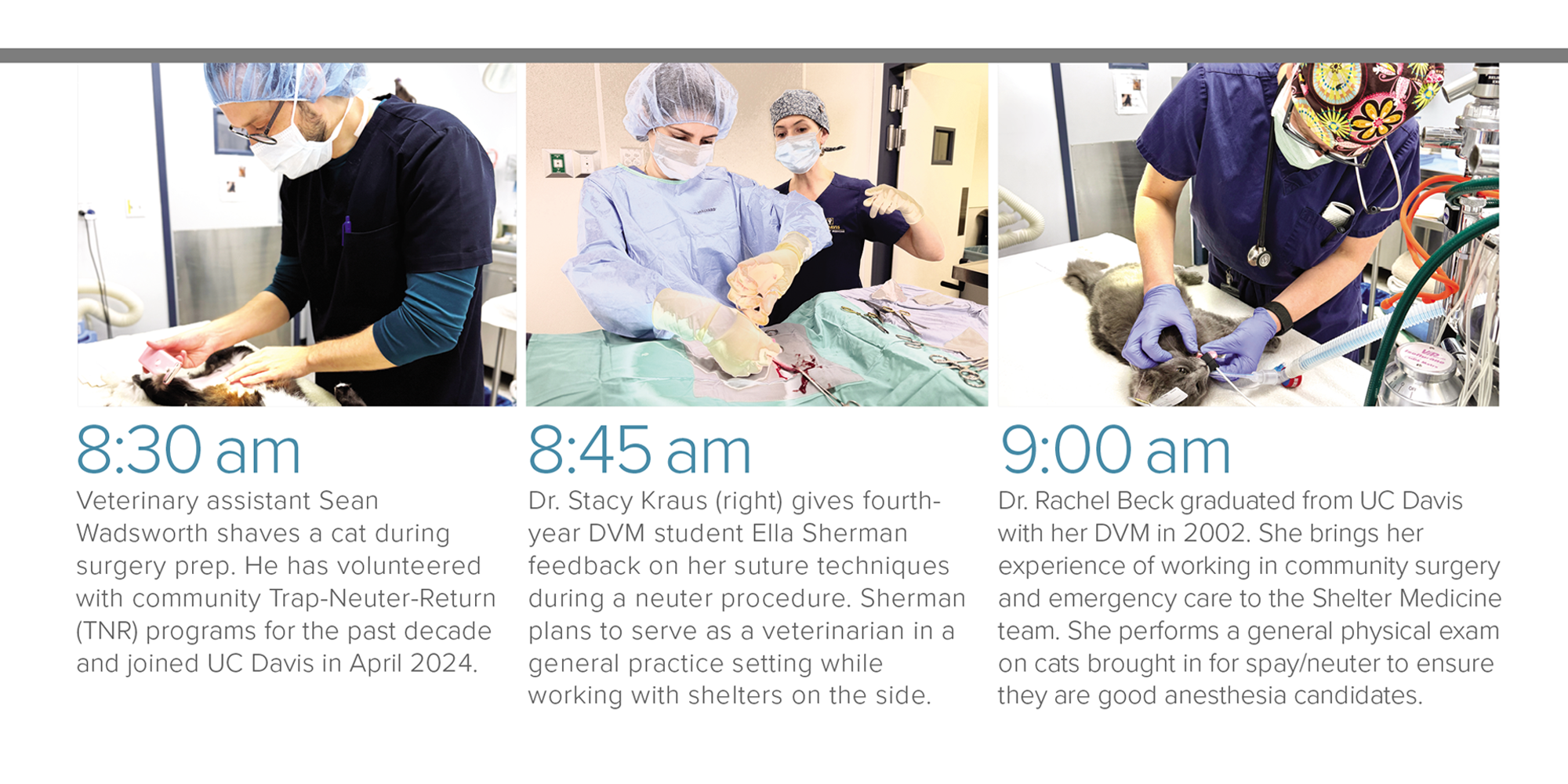
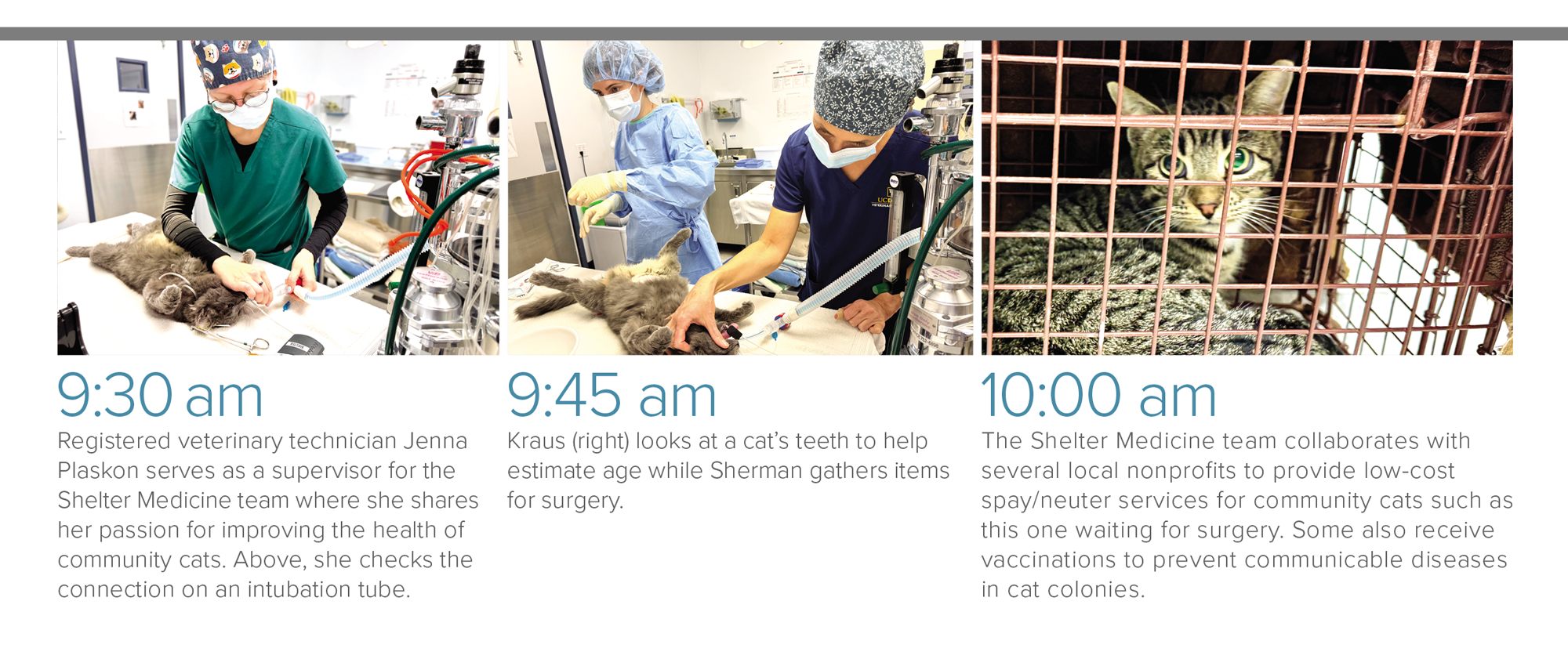
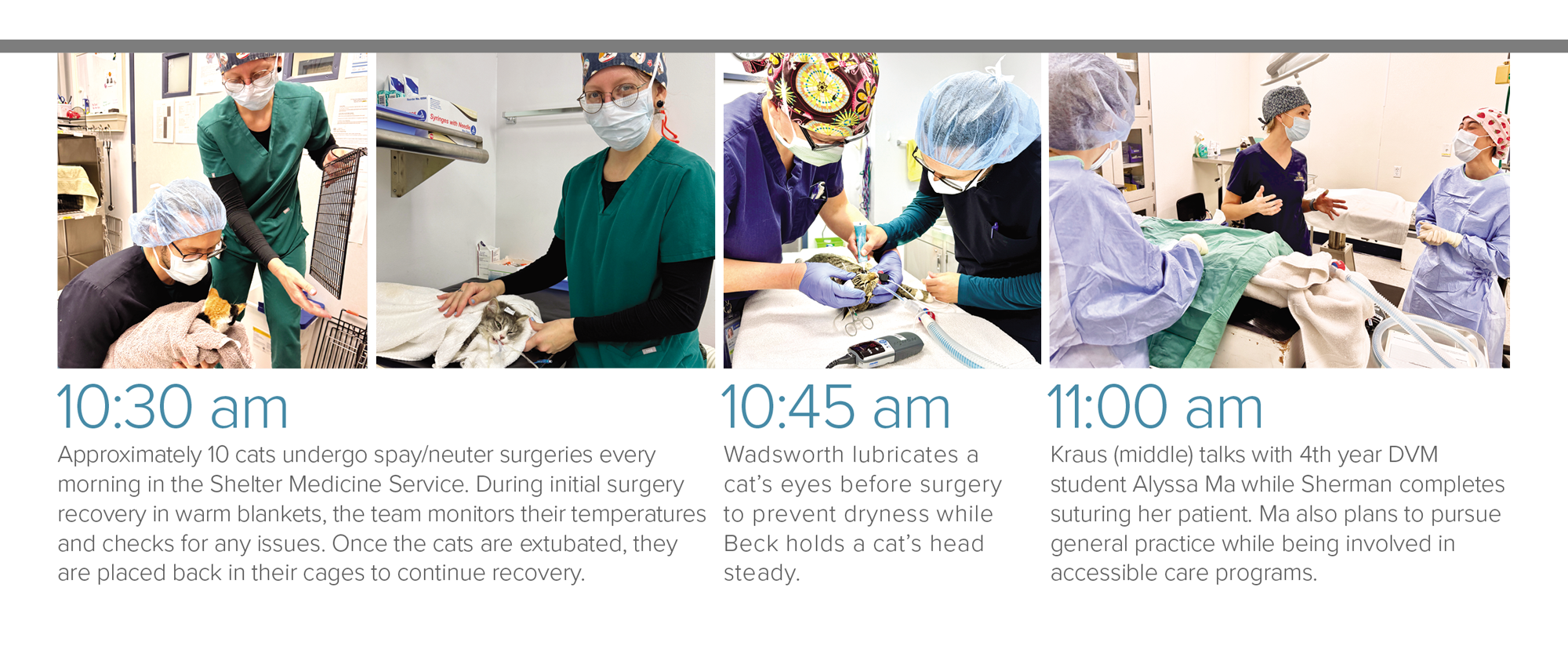
“She said, ‘Hey, we have a job opening for a spay/neuter clinical instructor and I hear you’re moving back to California,’” recalled Kraus, whose husband had just taken a job at UC Davis. “She told me I’d be working in a shelter with outdated facilities, with students who are learning beginning surgical skills. That sounded like a great challenge, but also the opportunity to work for Dr. Hurley and the Koret Shelter Medicine Program (KSMP) was a dream come true, so I took it!”
Teaching has always been in Kraus’s blood. Her mother was a kindergarten teacher, and her grandmother had also been a teacher.
“They always said I would go into teaching at some point in my career—I just got there in a roundabout way,” Kraus said. “But that was certainly a strong draw for taking this position. I really enjoy teaching and was excited to get more involved in educating future veterinarians in shelter medicine principles and surgical techniques.”
In spring 2016, Kraus joined the UC Davis veterinary community and now serves as Chief of Service for Shelter Medicine.
Now that the program has space in the Center for Companion Animal Health, she supervises the clinical training of approximately 55 veterinary students during their fourth-year shelter medicine and surgery rotation. Shelter Medicine is a core elective to meet the required six weeks of surgery training.
“We often have more requests from students to take this elective than space allows,” Kraus said. “We hope to expand capacity for more students in the future, but we would need additional resources, such as a third operating table to do so.”
Kraus enjoys working with the students to provide guidance and training using high-quality, high-volume approaches to spay/neuter surgeries. Repetition increases professional proficiency for the students, she says, each of whom completes about 25 surgeries within their rotation. She finds the improvement in their overall confidence and surgical skills to be highly rewarding, knowing that future generations of veterinarians are receiving focused training on performing essential surgeries efficiently, with the highest standards of care.
From the time that Kraus initially became aware of shelter medicine as an area of focus for veterinarians nearly 20 years ago, the field has greatly expanded. The number of rescue organizations and shelters continues to increase, as does the number of animals in need of the most basic access to care. In addition to student education, the shelter rotation offers accessible veterinary services to underserved animal populations, directly contributing to the reduction of animal overpopulation.
From the time that Kraus initially became aware of shelter medicine as an area of focus for veterinarians nearly 20 years ago, the field has greatly expanded.
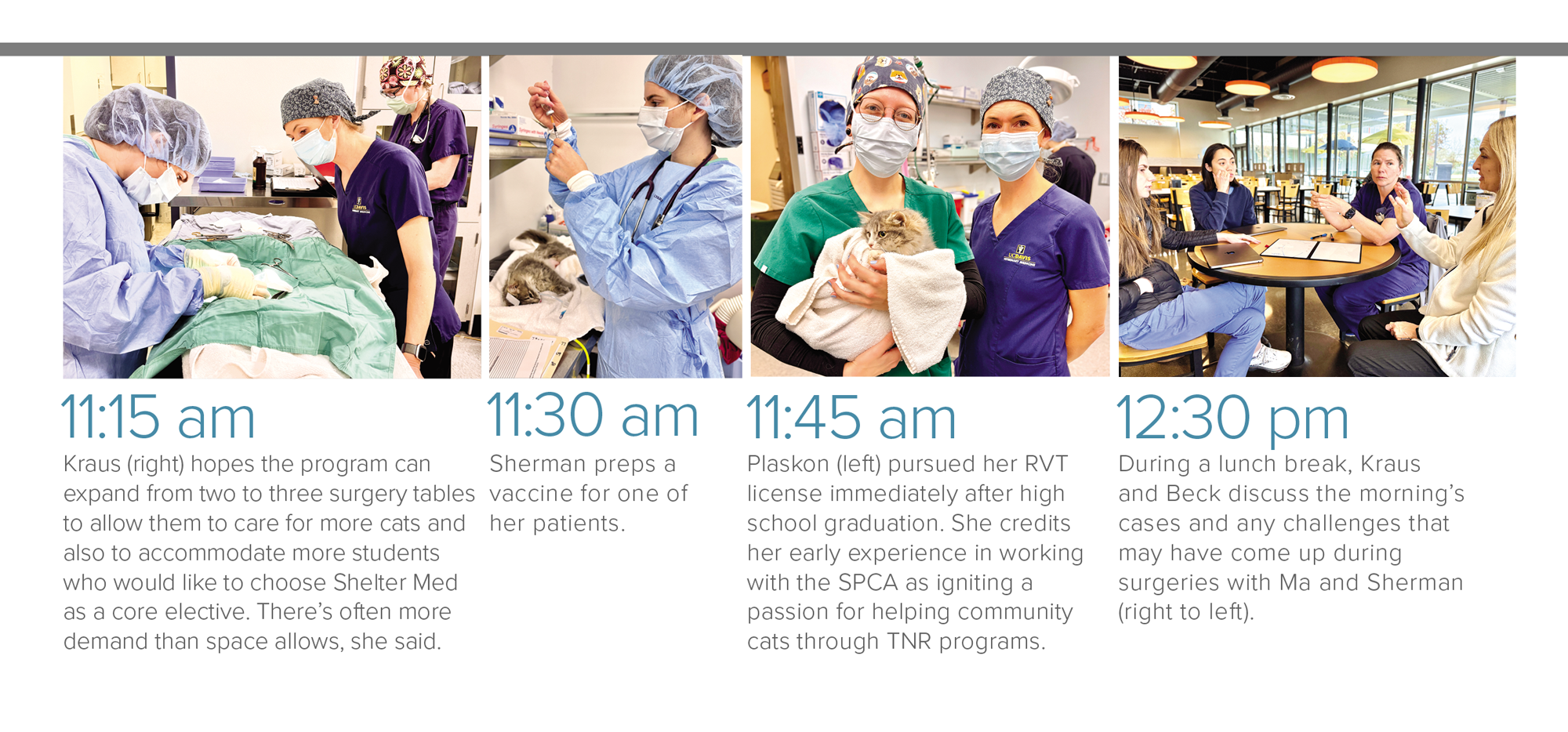
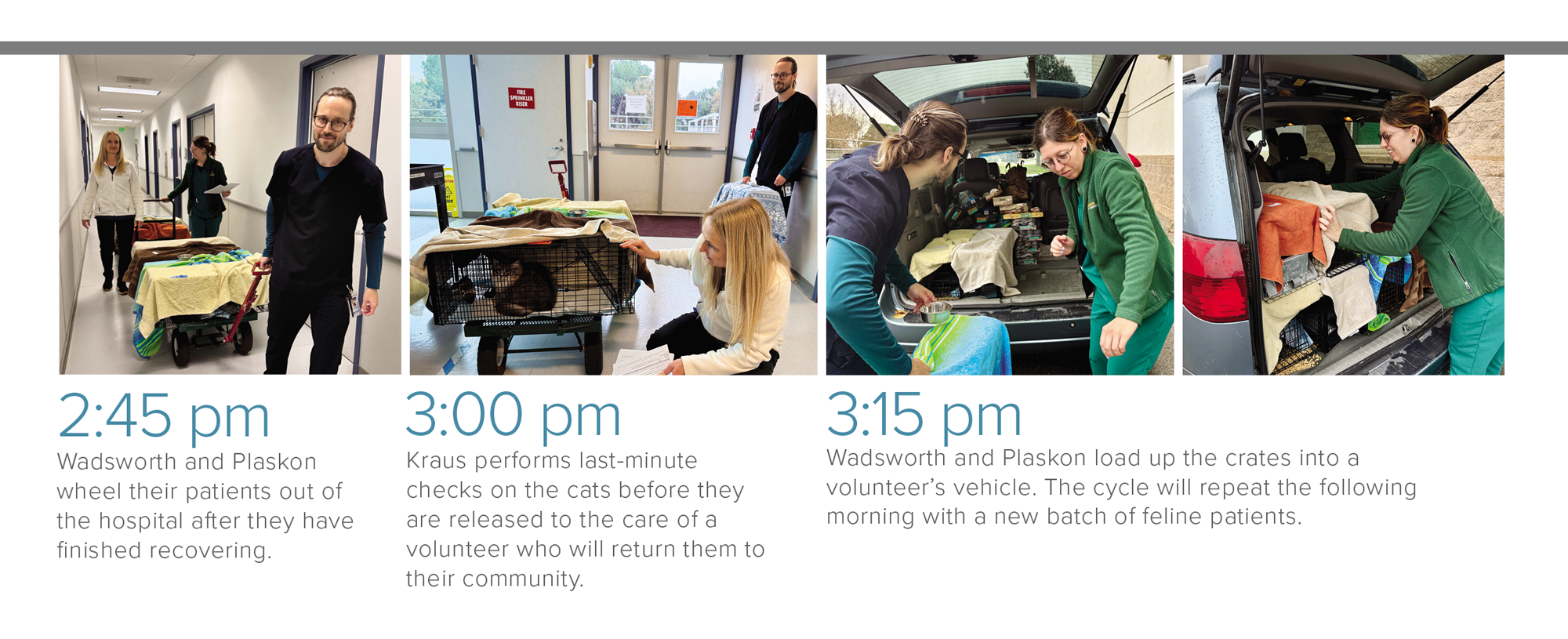
Professionals in shelter medicine—from the veterinarians and vet technicians to staff and volunteers—require a broad understanding of things like epidemiology, infectious disease, and preventive medicine.”
—Dr. Stacey Kraus
UC Davis has been at the forefront of recognizing the importance of training in shelter medicine for future DVMs, thanks to Hurley’s passion and dedication. She received the school’s prestigious Alumni Achievement Award in 2023 for her ‘courage and unshakable vision, succeeding in saving millions of animals by elevating expectations and providing excellence in Shelter Medicine.’
“We wouldn’t be here without Kate,” Kraus said. “It’s rewarding to follow her lead in training future generations of shelter veterinarians and knowing those efforts will save lives.”
